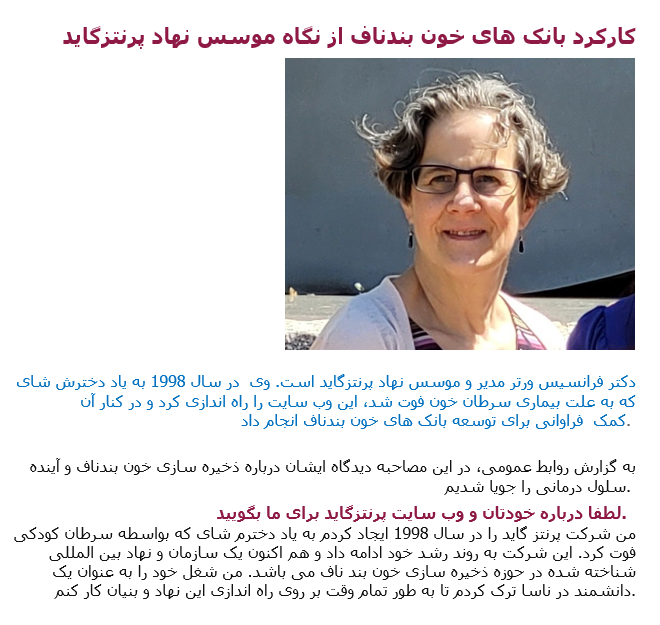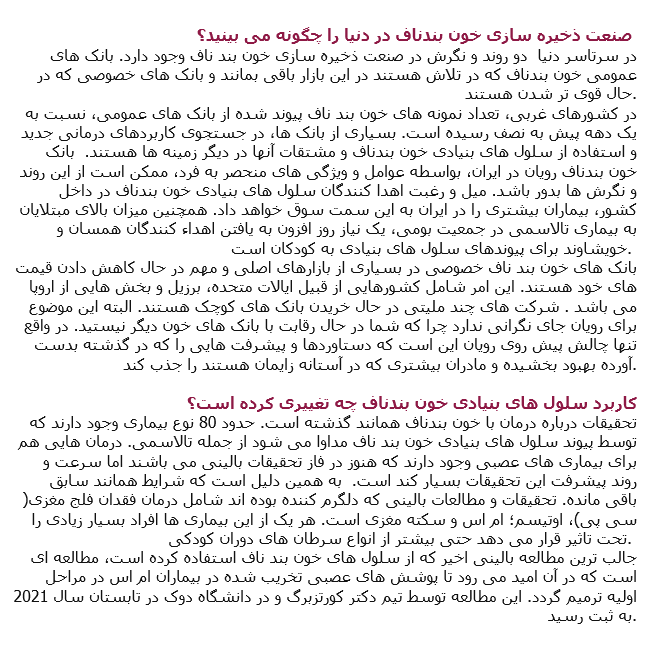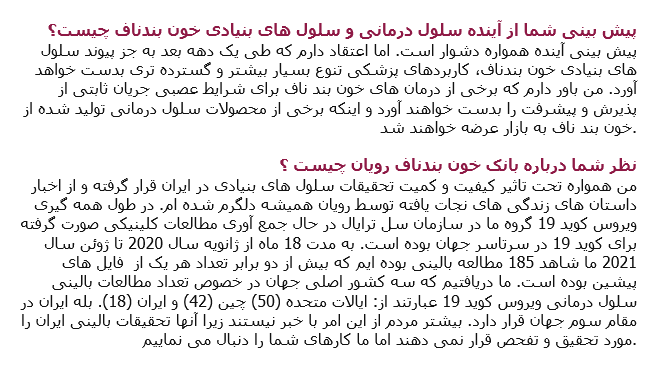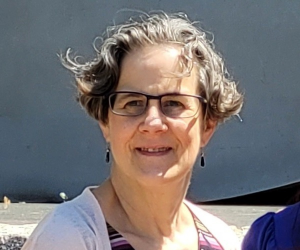Вы здесь
Parent's Guide Cord Blood Interview With Royan
I started the Parent’s Guide to Cord Blood in 1998, in memory of my daughter Shai that died of childhood cancer. It has grown to become one of the most well-known international organizations in the field of cord blood banking. I eventually left my job as a scientist at NASA to work full time running this Foundation.
Despite economic sanctions on the country, Iran has an impressive amount of stem cell research, both in quantity and quality. During the Coronavirus pandemic, our group at CellTrials.org has been compiling a free database of all cell therapy clinical trials for COVID-19 worldwide. For the 18 months from January 2020 through June 2021, we have published data on 185 trials, more than double the number in any other published compilation. We find that the top three countries in the world for numbers of COVID-19 cell therapy trials are: United States (50), China (42), and Iran (18). Yes, Iran is #3 in the world. Most people do not realize this, because most researchers do not search the Iran trial registry when they collect trials, but we are following this work. In addition to the clinical trials conducted at several universities in Iran, Royan has saved lives with cord blood transplants from their hybrid public/private bank.
Worldwide, the two big trends in the cord blood banking industry are that public banks are struggling to stay in business and family banks have been consolidating.
In Western countries, the number of cord blood units released from public banks for transplants is less than half of what it was a decade ago. Many public banks are seeking new applications for their inventory in advanced cell therapies derived from cord blood cells. Royan may be shielded from these trends by factors unique to Iran. The desire to find stem cell donors within the country will drive more patients in Iran to consider cord blood transplants. Also, the high rate of Thalassemia in the population of Iran creates an ongoing need for sibling donors for pediatric stem cell transplants. An example is the story of Mojtaba.
Family cord blood banks in several major markets are dropping their prices. These include the United States, Brazil, Hong Kong, and parts of Europe. The pace at which large multinational companies are buying up small family banks has increased. This is not a concern for Royan, because there are no competing banks in Iran. For Royan, the challenge is to improve on past accomplishments and try to reach deeper penetration among the mothers in Iran that are giving birth.
The odds of using cord blood cells for therapy are stuck in a status quo. There are about 80 diseases for which cord blood transplants are an FDA-approved therapy, including Thalassemia. There are a number of treatments for neurological conditions that look promising in clinical trials, but are not yet officially approved. Because the progress of that pipeline of trials is slow, it feels like a status quo. The promising clinical trials cover oxygen deprivation at birth (hypoxic ischemic encephalopathy), cerebral palsy, autism, multiple sclerosis, and stroke. Any one of these conditions impacts many more people than all of the childhood cancers combined.
The most interesting recent clinical trial is a study that hopes to use cells from cord blood to repair damaged nerve sheaths in patients with primary progressive multiple sclerosis. This trial was registered by Dr. Kurtzberg’s team at Duke University in summer 2021.
It is always difficult to predict the future, but I believe that a decade from now the medical applications of cord blood will be more diverse than just transplants. I believe that some cell therapy products manufactured from cord blood will be brought to market, and some of the cord blood therapies for neurological conditions will achieve mainstream acceptance.






